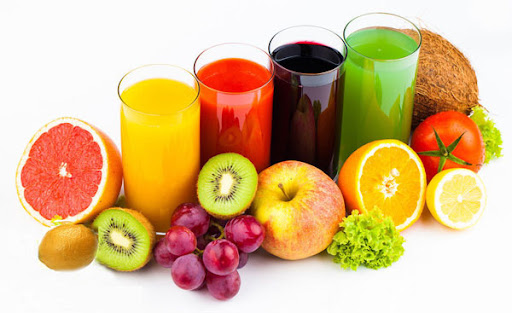Fruit juice production and packaging are a profitable business in India. You can start with a specific product. Or you can establish a multi-fruit juice processing plant. Definitely, if you go with different types of juice production, investment will be higher. In that case, you can also expect a higher percentage of gross profit from your business.
If you want to start a small scale fruit juice production business – can be started with a small investment. The raw material of this business – fruits, is easily available across the country. It doesn’t demand complex manufacturing technology. Here in this post, we intend to explore why and how to start a fruit juice production business.
FRUIT JUICE PRODUCTION – MARKET POTENTIAL
Within the beverages market, the packaged fruit juice is one of the fastest growing products. It has grown at a CAGR of over 30% over the past decade. At present, the Indian packaged juices market is valued at Rs 1100 crore and is projected to grow at a CAGR of 15% over the next three years. The rising number of health-conscious urban consumers is giving a boost to fruit juices. Juices are healthy only when prepared hygienically. So the hygiene conscious people are only buying packaged fruit juices for the companies that have trusted brand value in the market.Growing affordability and rising disposable income are also responsible for the growing demand of fruit juices in the Indian market. Last but not least, the boom in retail merchandising and eCommerce plays as major growth drivers in fruit juice market in India. Thus, we can conclude, small, medium or large scale fruit juice production is a profitable investment opportunity for the new entrepreneurs.
FRUIT JUICE PRODUCTION BUSINESS COMPLIANCE
To start a fruit juice production business in India, you will need to obtain different registrations and licenses from Govt. authorities. These are as follows
1. Firm registration with ROC
2. Trade License from local Municipal authority
3. MSME Udyog Aadhaar Registration
4. FSSAI registration
5. VAT registration
6. Compliance with FPO act is mandatory. You must maintain the guidelines such as location and surroundings of the factory, sanitary and hygienic conditions of premises, personnel hygiene, portability of water, machinery & equipment with installed capacity, quality control facility & technical staff, product standards, limits for preservatives & other additives, etc.
FRUIT JUICE PRODUCTION MACHINERY & RAW MATERIALS
There are three types of fruit juices available in the market. Fruit drinks, which have a maximum of 30% fruit content, are the highest-selling category. Fruit Juices, are 100% composed of fruit content and claim a 30% market share at present. In contrast, nectar drinks have between 25-90% fruit content but account for only about 10% of the total market. According to the specific product, you want to produce, you must select the right machinery. Here we have listed some of common machines and equipment, required for fruit juice production.
1. Intake equipment and bins
2. Inspection, washing, and sizing equipment
3. Rasper
4. Juice extractor
5. Finisher
6. Pasteurizer
7. Filling and sealing machine
8. Cooling machine
9. Labeler
10. Centrifuge
11. Vessels
12. Boiler
13. Conveying unit
14. Laboratory Equipment
For fruit juice production, major raw materials are different types of fruits. Apart from fruits, you must procure sugar, preservatives, food colors etc.
Packaging plays an important role in fruit juice production. Tetra pack is most popular among the consumer. Pet bottle pack is also running in the market. According to the size you want to deliver, procure packaging consumables. In a case of pet bottles, you must arrange the labels with proper product information.
FRUIT JUICE PRODUCTION PROCESS
The production process is not same for the different types of fruit juice processing. Here, we have mentioned a common production process flow chart for your ready reference.
1. FRUIT SELECTION & PREPARATION
Fresh, sound and suitable variety of fruits are collected and sorted. They are first washed by rotary brushes to remove soil and dirt from the grove and stems and leaves need to be removed from the fruit.
2. JUICE EXTRACTION
The selected fruits must be crushed to a pulp before pressing, the result of this being what is known as the pumice. Pulping is often followed by the addition of enzymes, which break down the cell walls of the fruit and thus increase the amount of juice extracted.
3. STRAINING & FILTRATION
To clarify the juice, which is still cloudy, the juice is first centrifuged – during which process the larger particles such as broken fruit tissue, seed and skin, and various gums, peptic substances etc. settle to the bottom – and then filtered.
4. COOLING
Quick cooling is important. Otherwise, the product will have a burnt taste and the color of the syrup will become dark brown. Therefore, the syrup should be cooled quickly.
5. PACKING & STORAGE
A vacuum – based bottle filling machine has been used to fill and pack the juice/syrup so that its shelf – life is increased. The juice/syrup should be filled in sterilized bottles to avoid fungus problems. The next step is sealing. the last step in the fruit juice production process is labeling and bulk packaging for wholesale delivery.


